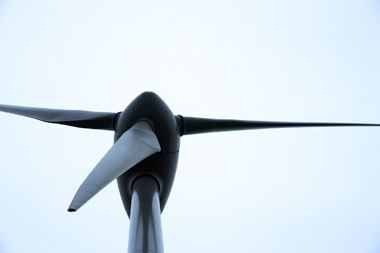Humans aren’t machines; we don’t have a constant source of power from which we draw to perform complicated functions all the time, without breaks. Rather, our power supplies—or our energy levels—dip and rise with each hour of the day, and they even wax and wane on a much larger level, and we find ourselves in periods of great motivation and energy or periods where we just want to do what we need to do to survive and no more.
And that’s not a bad thing. In fact, when we refuse to listen to our cycles of high and low energy, we make things worse, not better. If energy is low and we’re pushing ourselves, then energy will only get lower, faster. When we pay attention to these cycles and allow time for both recovery and hard work, the low energy periods end faster and our high energy periods are really high energy, and not just half or a quarter of what it should be.
Those times when we’re running on empty and need to slow down aren’t totally unproductive, though. They’re good for the fermentation and incubation of ideas, the processing and analysis of big decisions and other various background functions that don’t take much energy, but do take time for the mind to really resolve the missing pieces.
It is important to manage the ebb and flow of energy and motivation, both on a daily basis and a long-term basis. When you manage these cycles rather than ignore them, you are far more productive, but more importantly, you’re happier too.
1. Get to know your tides of energy
Like our energy levels, the tides of the ocean have a consistent ebb and flow. Fishermen know the tides like the back of their hand and that means they always know when to go fishing and catch the most fish.
There are many factors that contribute to our energy levels. On an average day, a person may know he’ll feel energized all morning, until after lunchtime, when he has low energy that suits busywork such as answering emails. Then, at 3PM, he may hit empty and need to take a nap, depending on whether he had beer or water with lunch.
On the other hand, another person may have a totally different pattern. She might not wake up until the morning’s almost over, bum around the house until two in the afternoon and then work straight through until midnight. Evidently, she’s a freelancer.
The point is, we can learn how our energy levels will change on a typical day. Pay attention and be mindful of the ebb and flow, and once you know when you’re most productive and most tired on a typical day, you can make a good guess as to how an atypical day might affect you.
2. Plan your tasks around these patterns
Corporate culture dictates that the first thing one does in the morning is check email. This is fantastic if you’re least energetic during that time, but destroys your effectiveness if you’re most energetic before lunch.
But now that you know when you have the most energy and motivation, it can be pretty hard to justify such a squandering of that time. Step two, and perhaps the most important step, is to plan your daily tasks to suit the way you work best.
Don’t rely on hard and fast rules, though. Just because you feel a certain way almost every day doesn’t mean you will every day. If you feel as though you won’t kick into high gear until afternoon on a given day, shift your task list around to suit.
The easiest way to plan around your energy patterns starts when you’re writing up your task list, not when you’re actually scheduling the items. Mark out each item with a high, medium or low energy requirement; if it’s processing email, it might be low, or perhaps it is time to reply to a few that require some research of facts—that’s probably medium. And if you need to write a long article or tackle a marketing campaign, mark those tasks as high.
Now, you’ve already blocked your day out in sections of high, medium and low energy. Load up iCal, or open your daily planner, or whatever it is you prefer to use, and it’s a fairly simple manner to dump each item into the appropriate section of the day.
Don’t forget that lists work best with some form of prioritization; if you’ve prioritized items in your task list before transferring them to your schedule, you know which order to put items of the same energy requirement in.
3. Optimize your energy levels
The first two steps help you make the most of your existing energy patterns, and making the most of what is already might be fine for you. Personally, I think that once we understand something and make it work as it is, there’s no place to go but up. This is the part where you start to optimize your levels of energy.
This involves a good, hard look at the way you live—diet, sleep, exercise, working habits, ergonomic factors (is your workspace arranged poorly, draining your energy faster as you struggle to sit upright?), and emotional factors (does bringing up the bills with your spouse always drain your energy before work even begins?).
I recommend experimenting with each area of your life that impacts on your day-to-day energy levels one at a time, in isolation. If you make three changes at once you can’t be sure which ones are working, or if one of those things is cancelling out the benefits of another.
When you find things that have a definite positive effect on your daily energy level, turn it into a habit, perhaps through the use of a 30-day trial which’ll give you enough time to decide whether it’s worth the effort before declaring that change as permanent.













































